A wide horizon new furniture
Stattmann
Nicola and Oliver Stattmann created the design label “Stattmann Neue Moebel”
with a systemic strategy focused on craftsmanship, design
and sustainability. In just four years, this has turned their family business,
which was founded at the end of the 19th century,
into one of the most exciting producers of handcrafted furniture.
nomad spoke to the two siblings in Ascheberg.
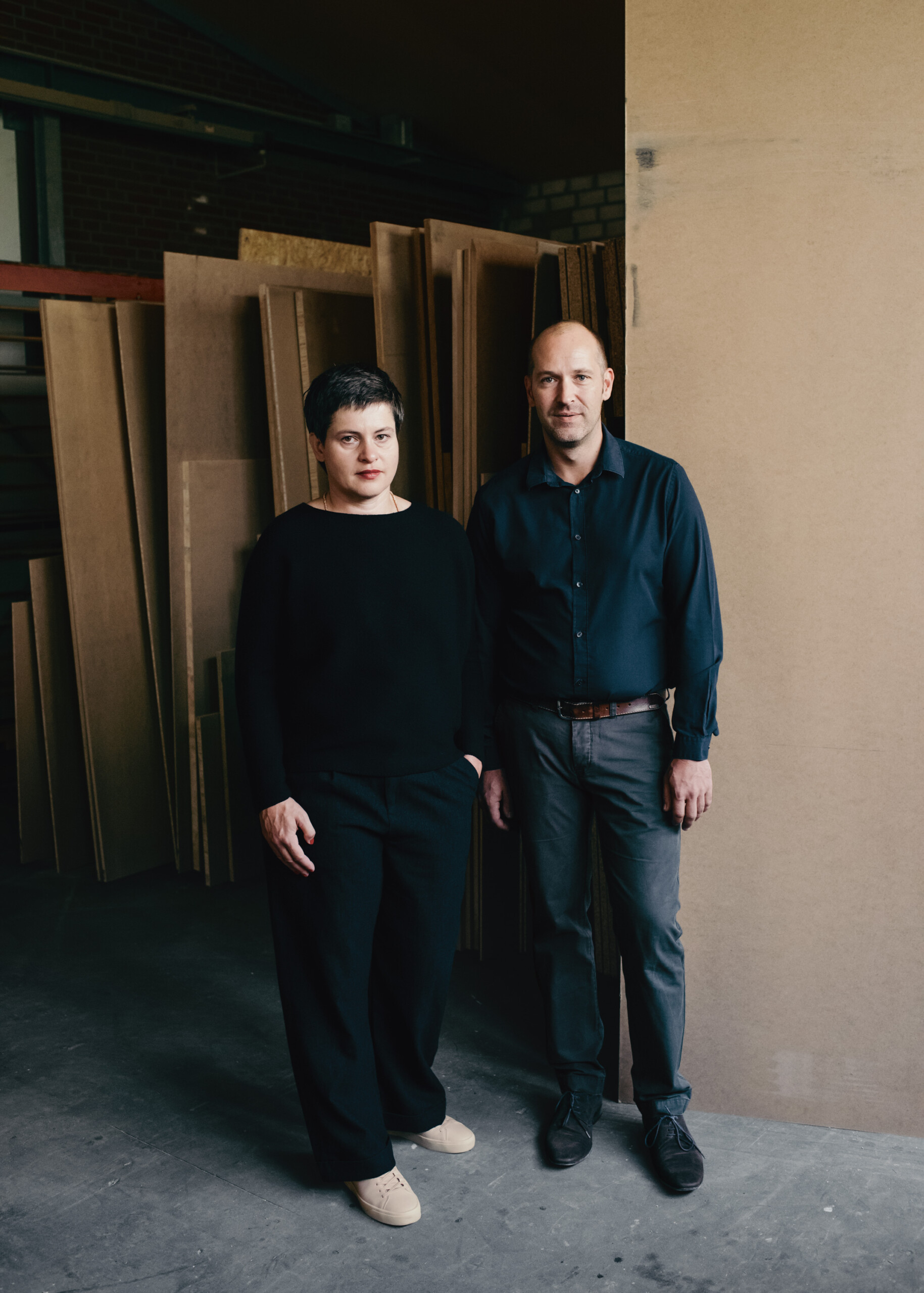
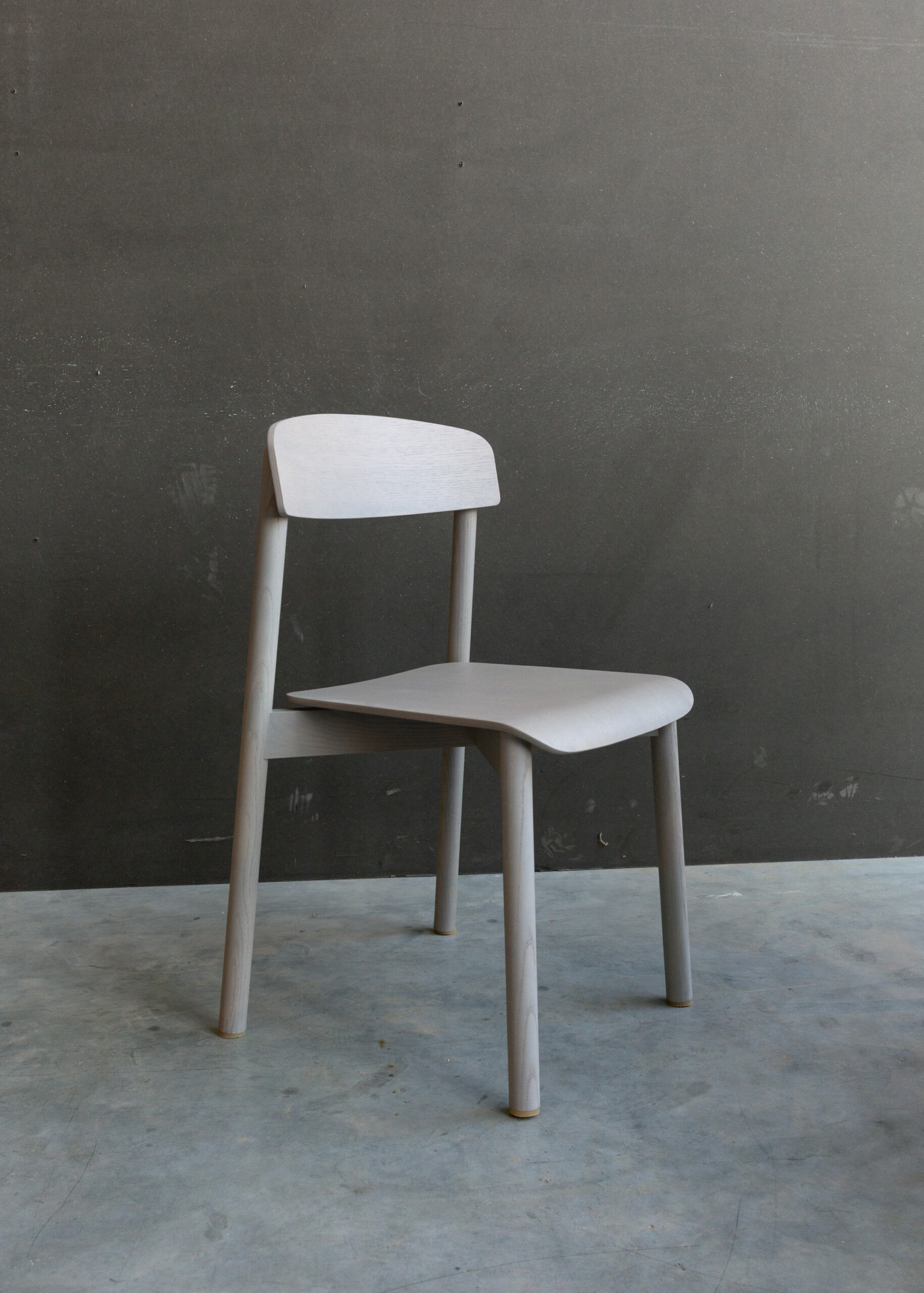
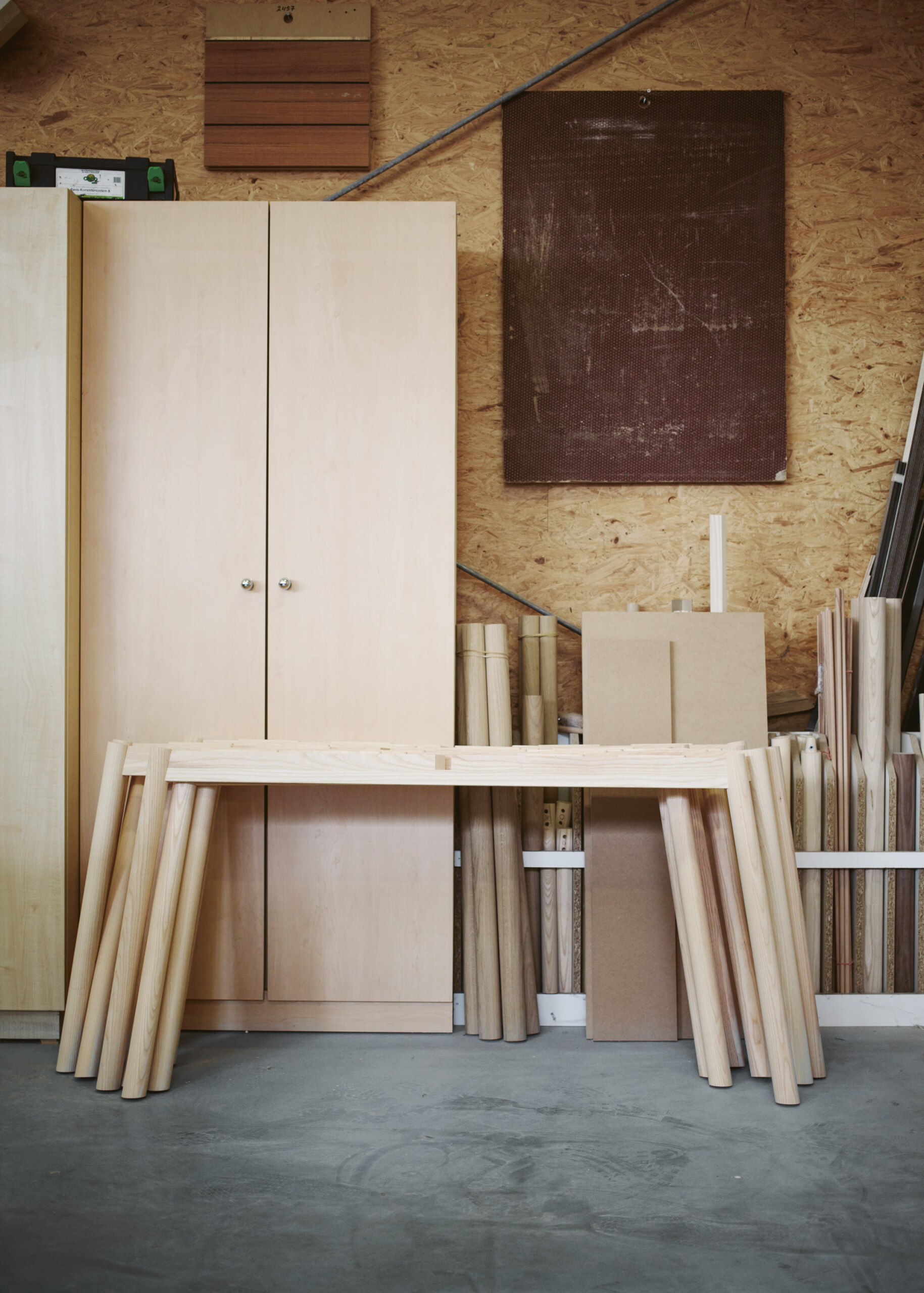
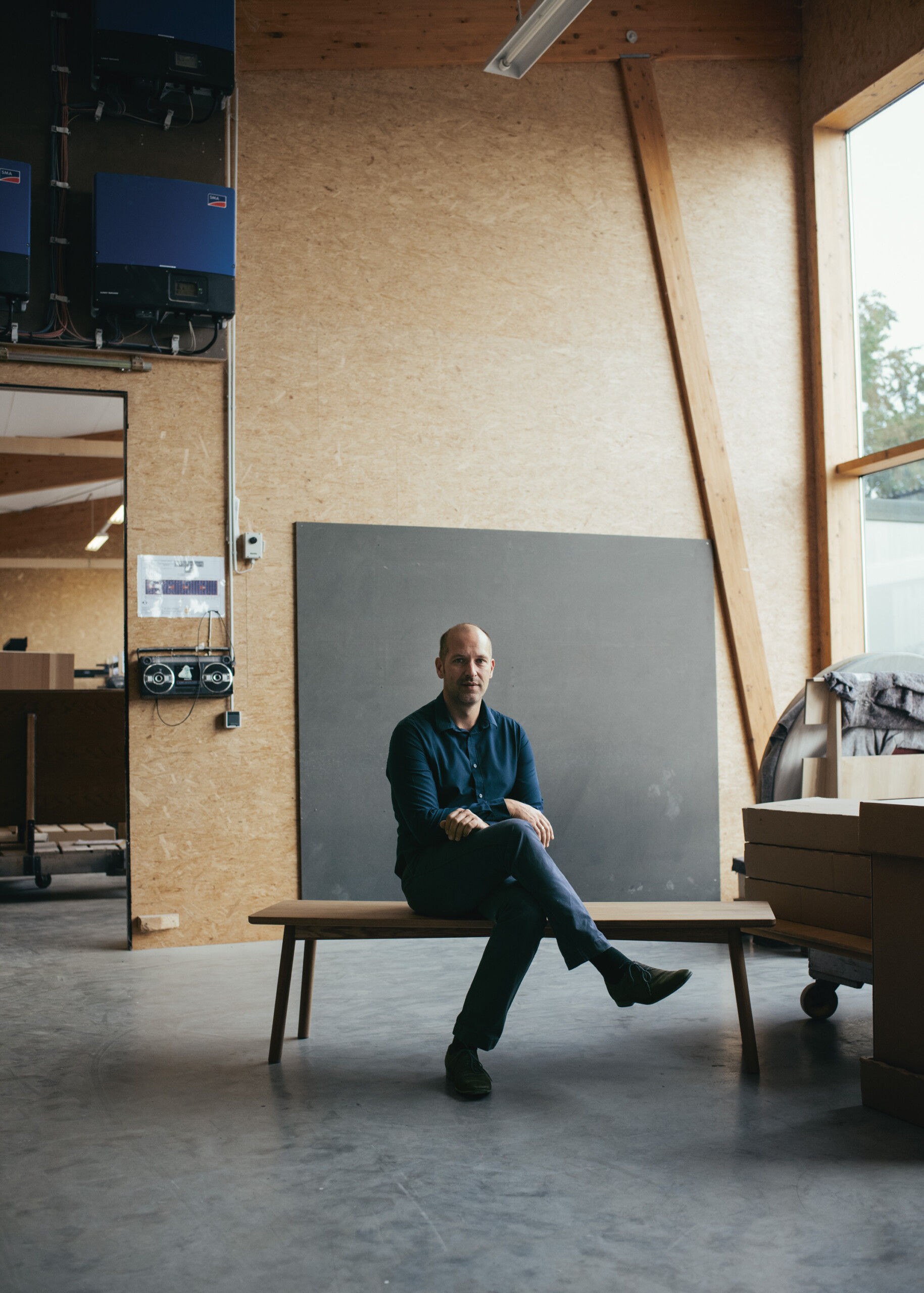
Oliver Stattmann is sitting on the Profile Bench,
designed by Sylvain Willenz. The simple,
linear design of the solid wood bench reflects Stattmann
Neue Moebel’s company philosophy.
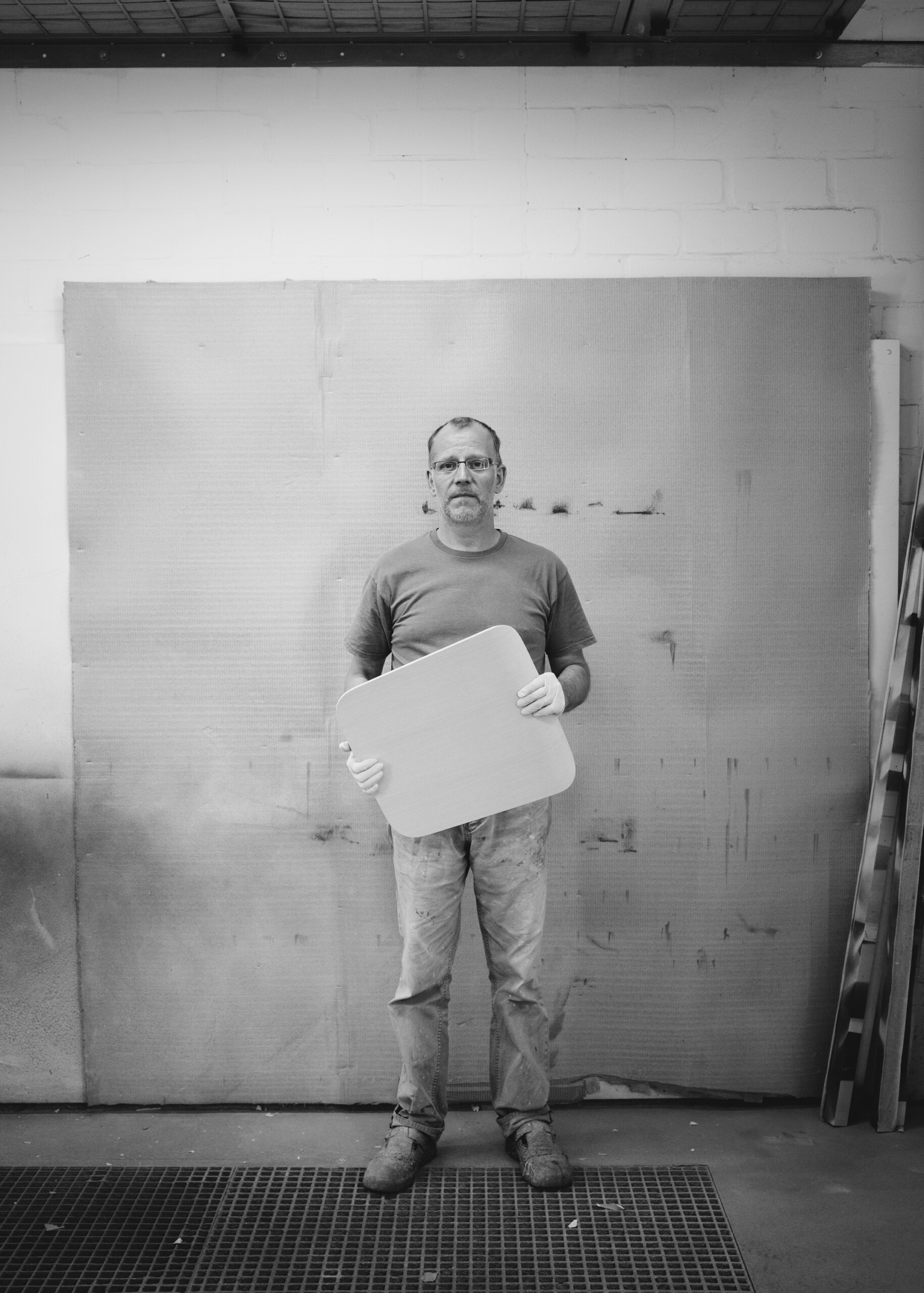
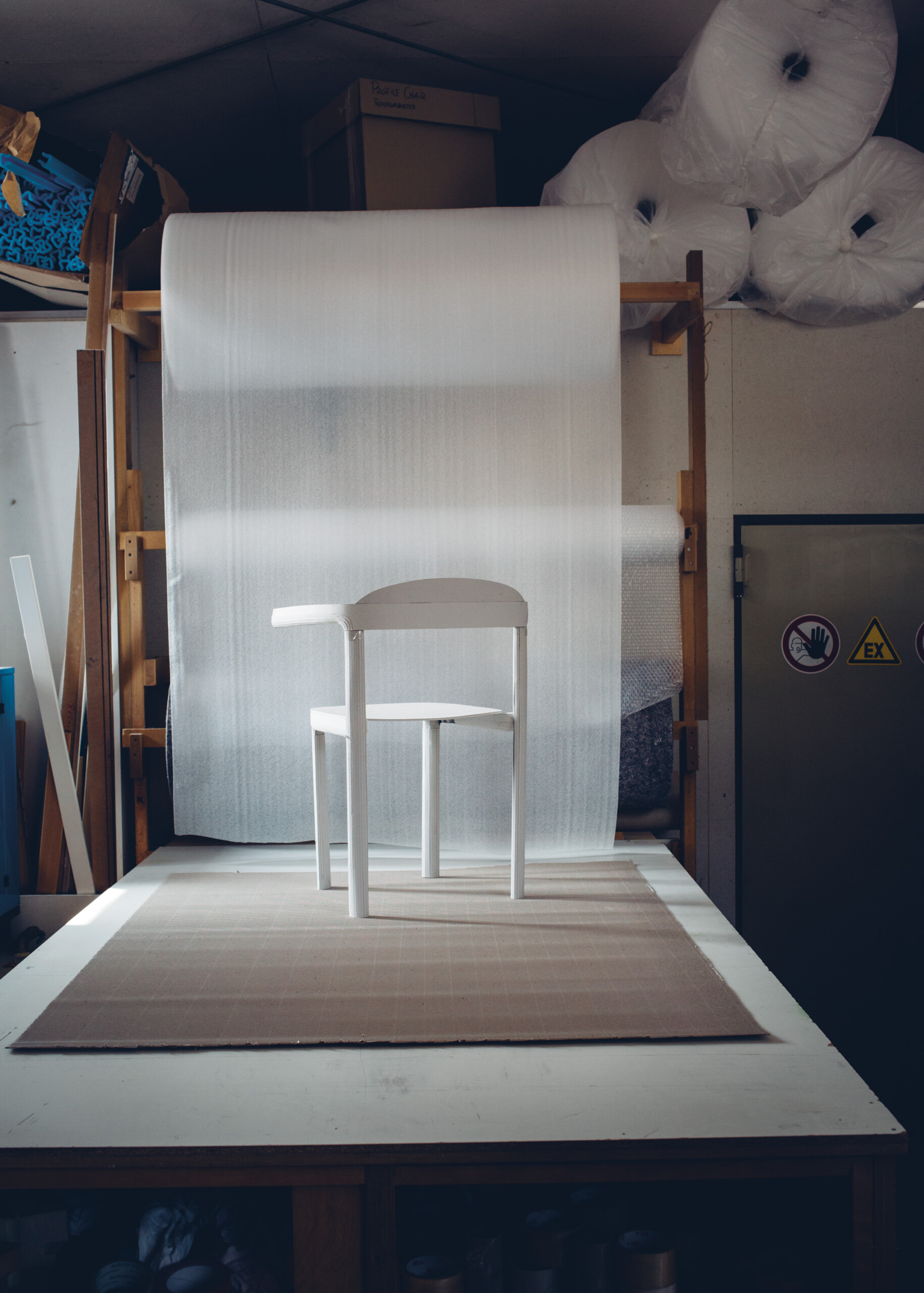
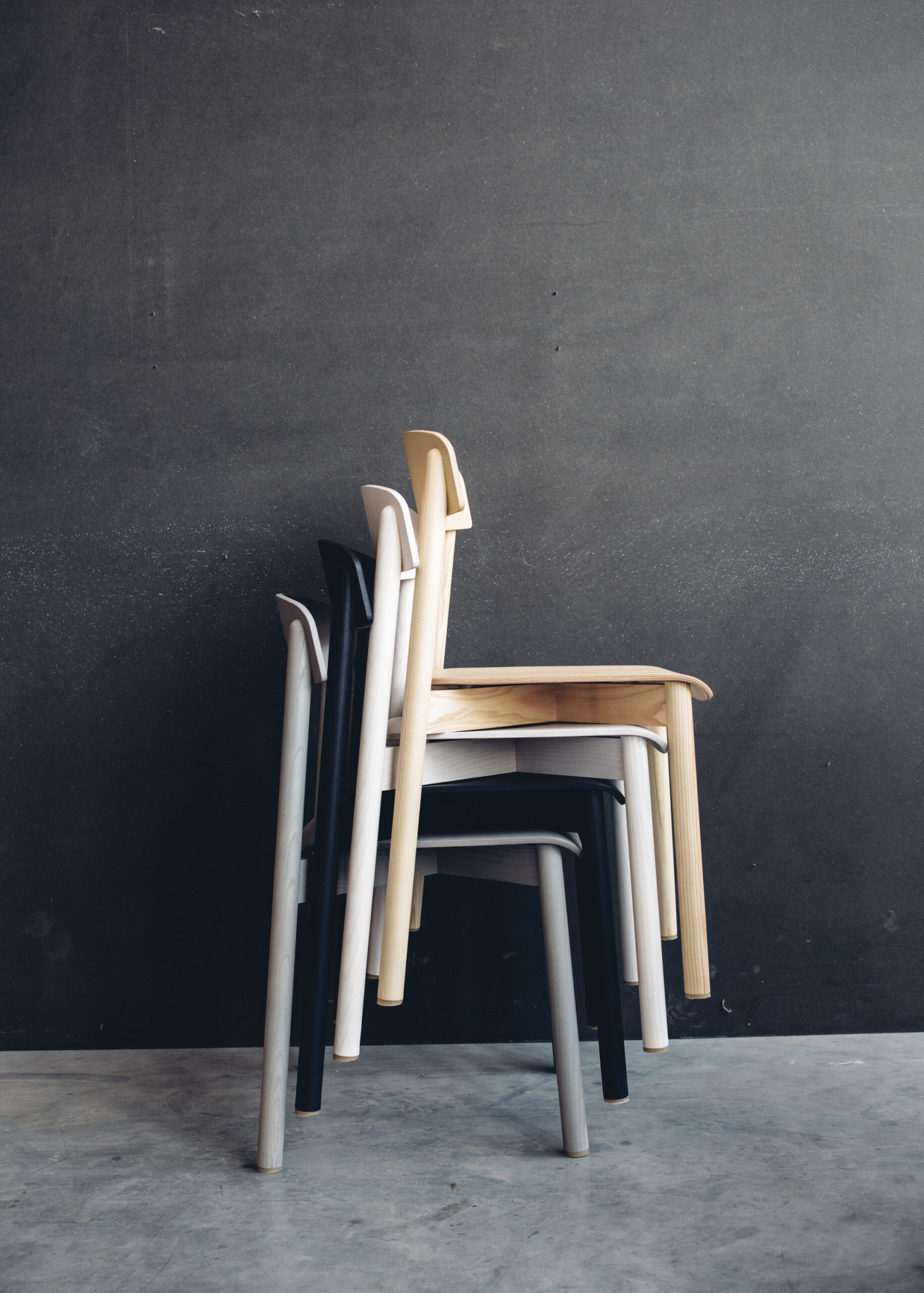
Beautiful, elegant and very light, the legs of the Profile Chair are made
from natural fibre which is coated with an ash veneer.
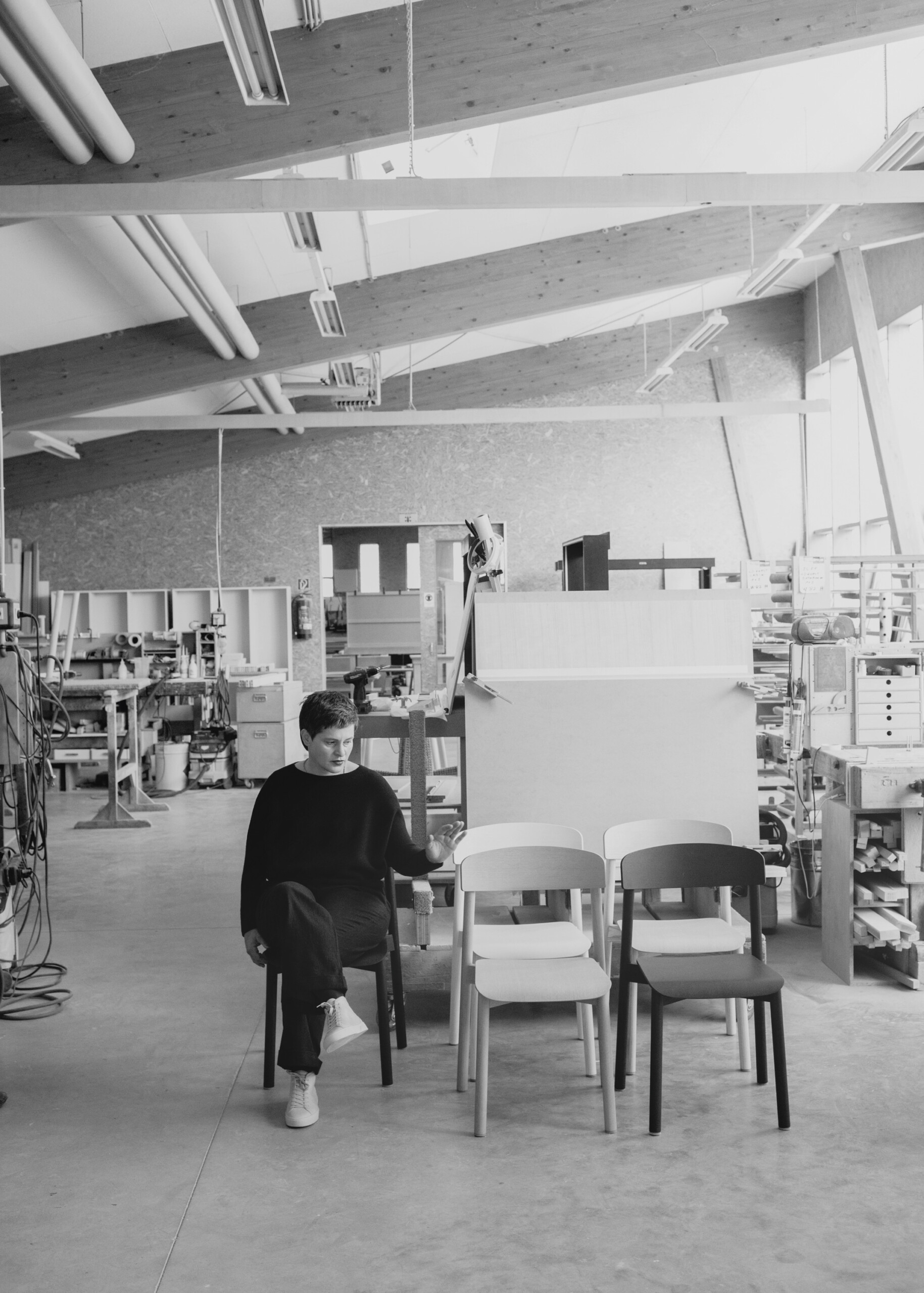
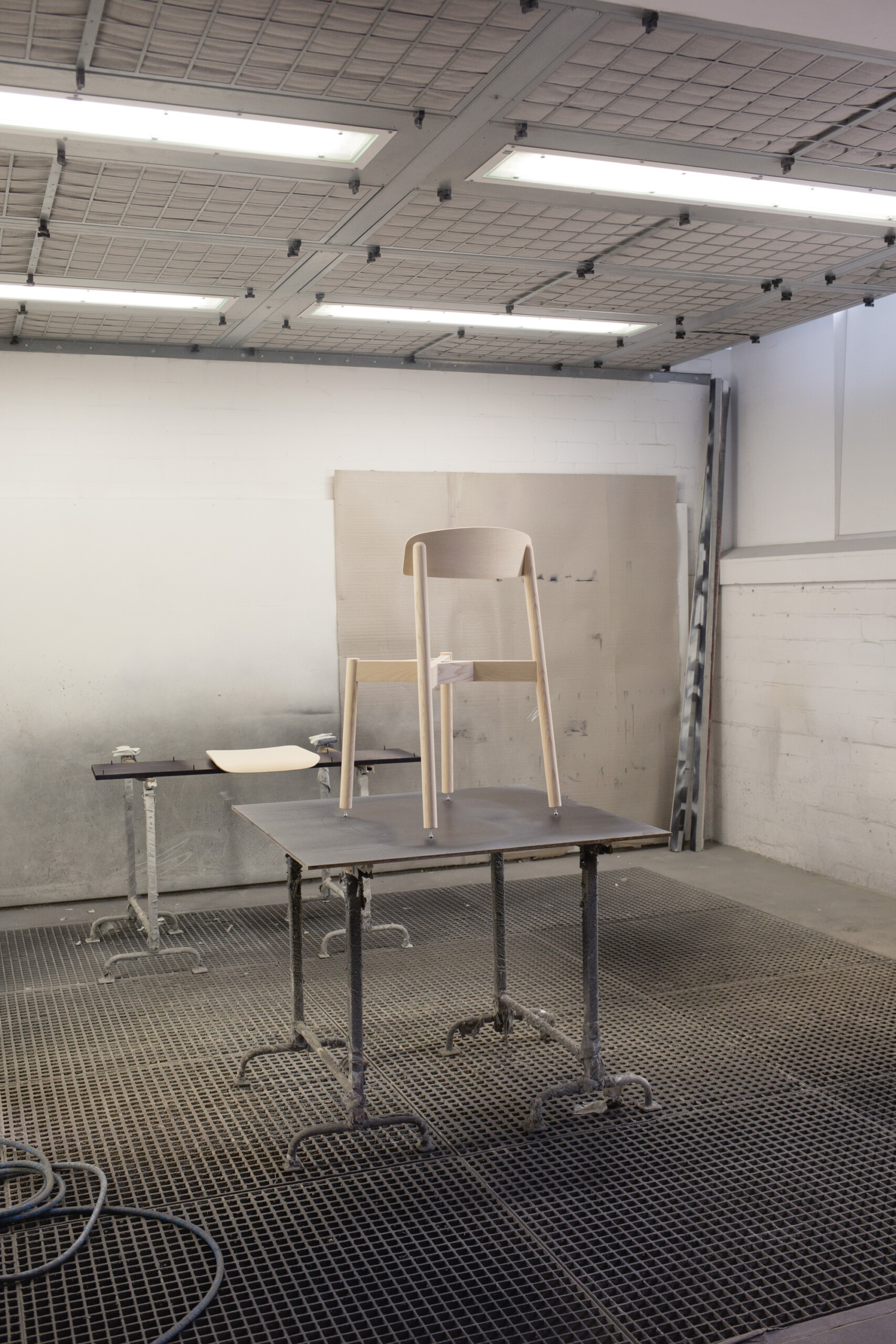
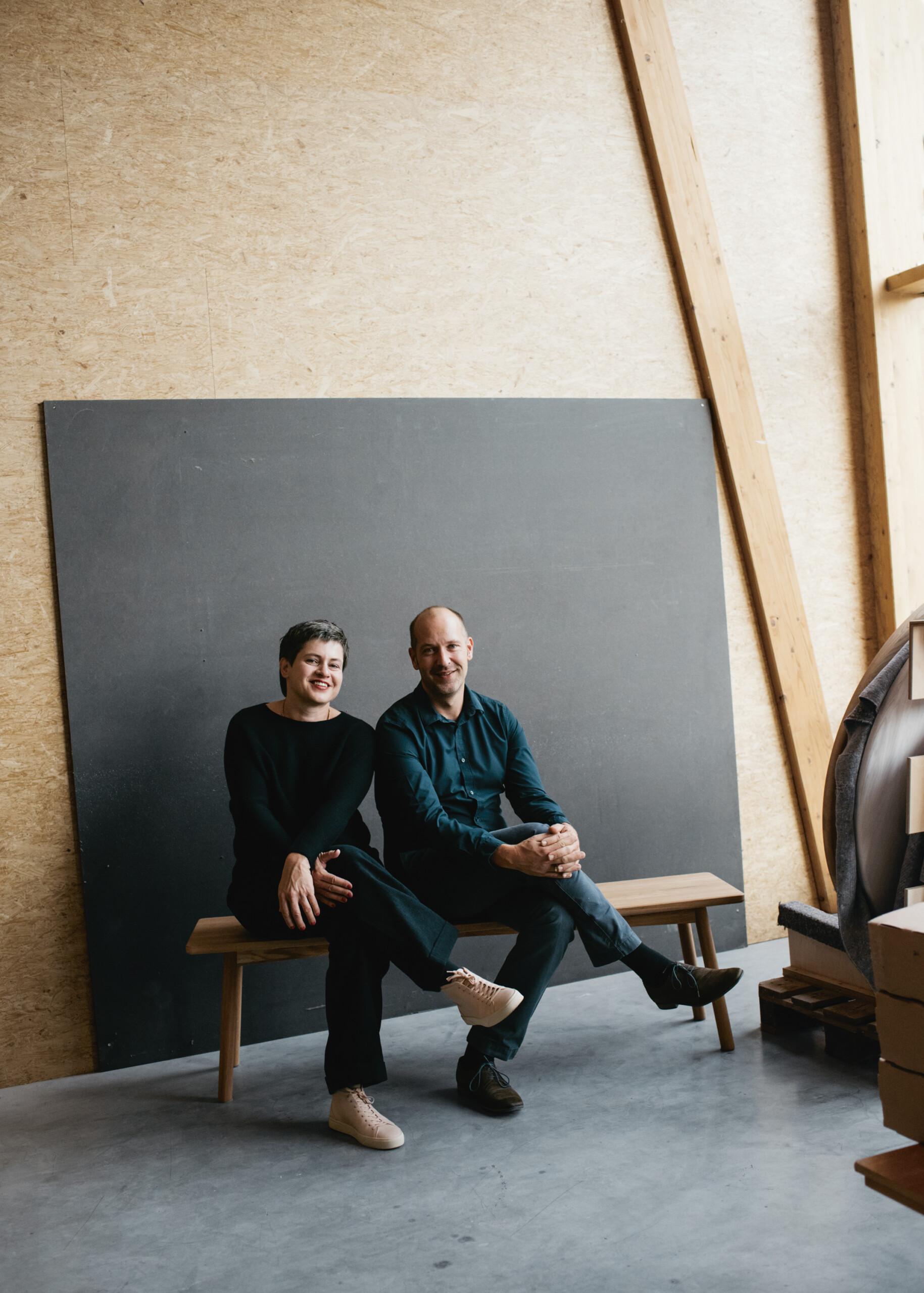
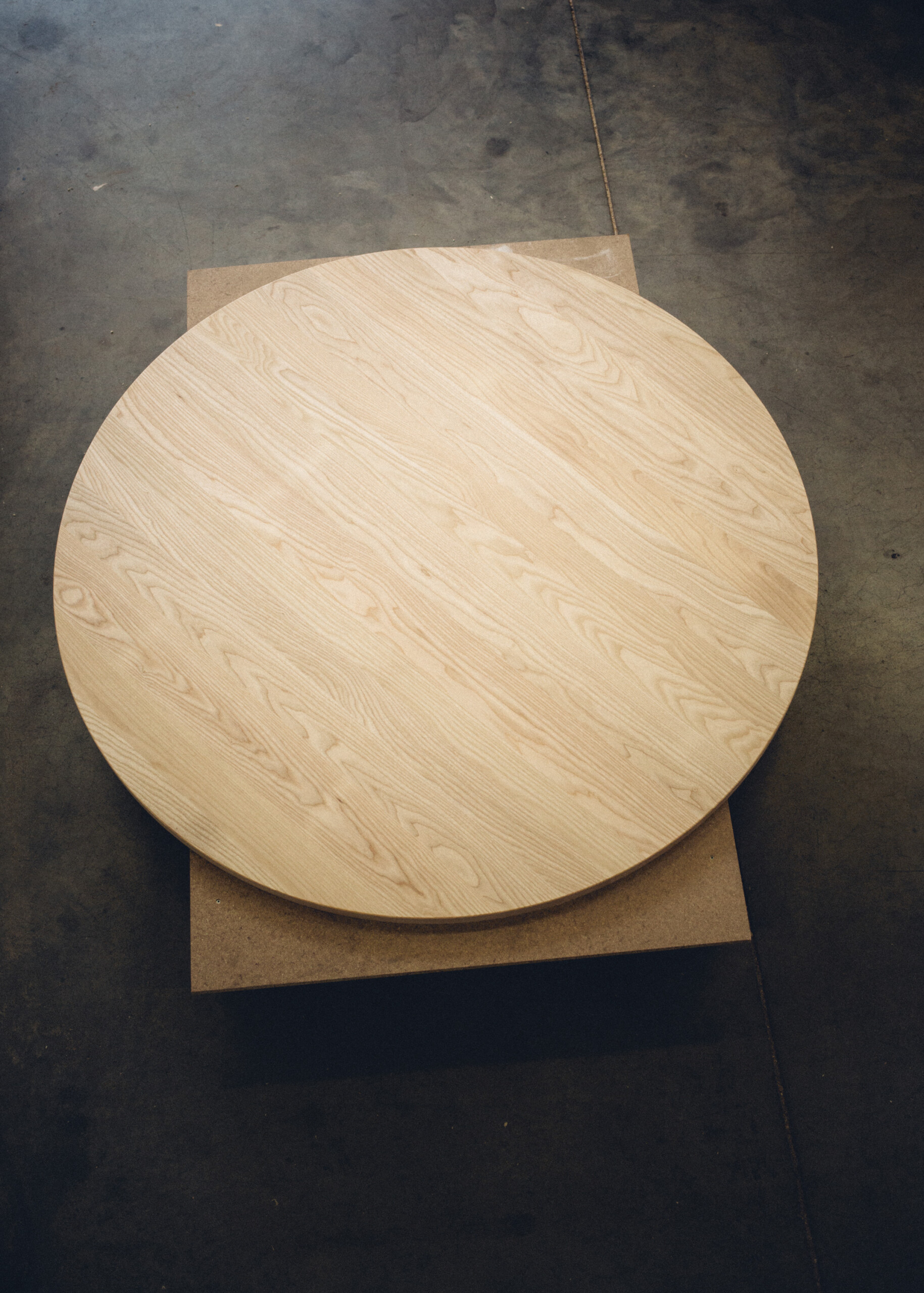
Leaning on tradition to shape the future
A VISIT
When thinking about locations in Germany for ambitious young furniture companies, Münsterland, in the northwest corner of Westphalia, does not automatically spring to mind. Yet it is precisely here where the Stattmann Neue Moebel company, which is based in Ascheberg, to the south of the town of Münster, has made its home. The countryside is flat and the horizon wide. The houses are made of red brick and the region positively reeks of agriculture. The tractors chug along, ploughing precise lines in the fertile soil. This is where the company of carpenters has chosen to settle, in a hamlet in the midst of green countryside, far from industry and hipster cafés.
The fourth generation of Stattmanns are managing their company with local staff. Things might have just run their course, but the brother and sister team, the wood technician and master craftsman Oliver Stattmann and the designer Nicola Stattmann, realised their dream of owning their own furniture company where they combine design with craftsmanship. Since 2012, they have been producing their own collections of tables, chairs, benches, shelving and accessories. In just four years, they have managed to develop their brand into a well-known designer label noted for sustainable furniture. This is not merely on account of its classic straight lines and its elegance of design, but also for the clarity of the concept.
The company uses local woods from sustainable forests. The water-based wood stains are also environmentally friendly and the top-flight craftsmanship which distinguishes the finish is virtually unequalled these days. Precision dovetail joints render screws and glue obsolete and the open-pore surface finish allows the quality of the wood to shine through. Brother and sister do not design themselves, but have young designers like Steffen Kehrle from Munich, Sylvain Willenz and Marina Bautier from Brussels working for them under contract. These are designers who place an equally high value on the material as the Stattmanns. The company has just obtained a major order from Hamburg: tables and chairs for the new Elbphilharmonie concert hall. Time for a trip to the country.
How does a carpenter with a long tradition in Münsterland come to establish a furniture company?
Nicola
Well, we had the idea some time ago. We had often spoken about how we might start our own furniture company and so I showed Oliver some furniture designs which I loved and we discussed the details. As a product designer, I was interested in the interface between craftsmanship and serial production. We had been making furniture for generations as carpenters. The products were individually crafted pieces, and of course, accordingly, they were rather expensive. We are taking a different path with our serially-produced furniture, which is still hand-finished by craftsmen and women, which is durable and will survive from generation to generation, but which is still affordable. These are not luxury products, but solid, functional furniture.
Oliver
However, alongside our ideals, concrete economic considerations also played a part. I wanted an additional string to our bow, enabling us to make better use of our capacity and to fill any gaps in the order book. These days, even craftsmen and women have to be flexible and find new solutions.
Nicola
Even though I live in Frankfurt, I feel very connected to my homeland and our family business with its long tradition of craftsmanship and everything that this signifies is particularly close to my heart. That’s why the future of the company is very important to me.
What aspects of design are important to you? What is your philosophy?
Nicola
To us, good design means that the product possesses a certain obvious quality, but on closer inspection fascinates and inspires in terms of form and function.
Clarity in combination with particularly constructive, innovative details—that is important to us. Our pieces therefore feature straight lines; they’re honest, almost archetypal. The intention is for them to accompany people through life and feature in various rooms. The tables are suitable for mealtimes but can also be used as a desk. Benches, chairs and shelves have been designed so that they can be used in the kitchen, living room, hallways, offices and even in the bathroom.
Oliver
Our furniture should become cherished pieces. The intention is for them to be passed on down through the generations, as was always the case with handmade products in the past.
How did you start? Did you call a few designer friends?
Nicola
We got together and analysed the contemporary world of furniture. What’s happening? What do we want? What suits us? How can we make this project successful? The fact that we needed designers on the team who were already well-known and who knew all about furniture design was clear to us from the outset. We found designers who were good with wood, to whom lightweight construction was important and who were open to try something new.
What brief did you give the designers?
Nicola
When we knew that they were prepared to risk experimenting with us, we gave them a sample box containing examples of delicate dovetail joints, design examples, special material combinations and a small guide to wood craftsmanship. We put all this together to show the designers where our interests lay, what perhaps surprising design and construction potential solid wood offers and what craftsmanlike quality means to us. In other words, all the reasons why we love wood. And it worked well. The designers are still happy about the box and these days, they don’t really need to refer to it any more.
Oliver
Beyond this, it gave a very clear idea of the artisan products we can produce and this made product development far simpler.
Sustainability and ecology are important to you. What are you doing to save resources?
Nicola
We are very careful in our use of materials and energy. As a designer and materials expert, I value lightweight construction. None of our furniture is more solid or heavier than is absolutely necessary. In addition, we are very careful not to generate too many wood shavings, which are wasted. We develop furniture which needs the least possible machine time and the fewest work stages. This saves time, space and energy and we also try to use as few metal fixings as possible, since their production uses a great deal of energy. We do as much as we can just using wood.
Oliver
…and we also only use top quality material from certified sustainable forestry and we ensure that nothing is wasted. Not even our waste. We chop up the wood shavings and use them to heat our workshop. We keep transport distances short, because products are either produced here at the workshop or under contract from suppliers in the region.
How can you check where the wood comes from?
Oliver
We obtain our material from two suppliers from whom my father already used to buy wood. We know and trust each other and if we ask them, they can submit an FSC (Forest Stewardship Council) certificate for every order.
What are the distinguishing features of your work?
How can people recognise a typical product made by the Stattmann company?
Nicola
We only use ash and oak and these are trees which are indigenous to Europe. For the surface finishes, we use water-based stains and an eco-friendly matte hard wax finish. The wood is treated in such a way that the structure, or grain, remains visible. Even with the different stains we use, our furniture always looks natural. It’s important to us that the actual material and its quality are tangible, for example, when you run your hand over the surface of the wood.
Oliver
Typically distinctive features of our furniture are the craftsmanship of the detail, such as the dovetail joints. These have to be developed with the necessary technical expertise and very precisely produced, otherwise they won’t work. This is no simple task when working with natural materials.
What types of joints do you use?
Oliver
Traditional dovetail joints, but newly interpreted, so that they work without glue or screws. In Steffen Kehrle’s plug shelf, for instance, the uprights and shelf floors can simply be plugged together. It’s quick and so efficient that these shelves can be taken down and reassembled without damage many times, and this is a testament to their long service life and durability.
How do you work together? Who does what?
Oliver
I am responsible for production, packaging and despatch and Nicola takes on the sales and marketing and any other queries.
Nicola
Most of our conversations take place on the phone, but when the issue is the development of new products, I come over to Ascheberg. We deliberate together on which pieces to add to the collection, talk to our agents and discuss and evaluate their experiences. When we are looking for new technical solutions, we talk with the master craftsmen and women and we make all important decisions together as a team. We are brother and sister and this is a great advantage for working together. We absolutely understand each other, have the same aims and values and, in fact, we can always reach a solution together.
Four years have passed since the start. What have you experienced during this time? How did your concept become a reality? What were the lessons you had to learn along the way?
Nicola
We are satisfied. Demand is rising and we now have seven products in diverse formats, models and colours. Just now, we’re building the tables and chairs for the Elbphilharmonie concert hall in Hamburg. We’re delighted with that. But at the beginning, we did not give enough consideration to classic retailing. Instead, we showed our furniture in fashion studios and restaurants whose eco-friendly sustainable approach suited us. This guerrilla strategy was and remains first class. It helped us to become well-known within a very short space of time. In the meantime, however, we are also represented in retail stores. Above all, we’ve learned how important it is for us to work with architects and interior designers and this is an area we are aiming to expand.
Oliver
The subject of despatch and packing kept busy at first. As a carpenter, I was suddenly not just making furniture, but also sending it out for delivery by courier. I had completely underestimated this aspect at the outset. We developed individual packaging for each piece together with a carrier specialising in furniture packaging. However, we did not send our products out by the usual freight carriers, and used couriers instead, and this proved inadequate. Package deliveries are rather patchy, especially abroad, and so at the beginning, several chairs were delivered to customers in pieces. It was terrible to hear from disappointed customers and see photos of broken chairs. But all that is in the past and now our products are as well protected as only ice hockey players are.
“WE UNDERSTAND
EACH OTHER PERFECTLY.”
Nicola Stattmann on
working with her brother
Both of you were originally trained as carpenters. Where? Here in Ascheberg?
Nicola
No, our father didn’t want that—and neither did we. We trained at a very good company in the neighbourhood.
Oliver
But we weren’t there at the same time. Nicola is older than me and she trained first. When she finished her apprenticeship, I began mine and more or less took her place. After that, I went to the college in Rosenheim which specialises in working with wood and in 2002 I joined my father’s company. Nicola studied product design in Saarbrücken, specialising in material technology design concepts.
Does your father understand what you’re doing here?
Nicola
At first, he was very critical. He walked through the workshop and studied the designs very closely. Of course, he had some questions: a chair made of natural fibre tubing? Is that supposed to be stable? Why aren’t you making the table frame the way we always used to? But all that has changed and now, he is delighted that we are producing a growing number of “new” pieces of furniture in the workshop and that people all over the world send in orders for it.
Oliver
He lives directly next door to us and so he knows how well we’re doing. Magazines with features on Stattmann Neue Moebel regularly disappear from the office into his living room. He is really rather proud.
What’s your earliest memory of the carpentry company?
Oliver
We grew up here and the company shaped our lives.My earliest memories are all connected with the company. Our mother ran the office here and father was in the workshop. As young as one or two, we were taken to the factory, where we discovered the spirit levels and magnifying glasses on grandpa’s desk, and we were lifted onto the workbench by the apprentices so that we could watch them work. We made our own “intarsia pictures” with bits of wood in the veneering workshop and we also played hide and seek in the warehouse where the wood was kept. Our friends also enjoyed coming to us. We had lots of space where we could play all sorts of games.
Nicola
Father showed us everything. It was important to him for use to be able to distinguish the different trees, shrubs, leaves and woods at kindergarten stage.
You’re not based in an industry park or in the centre of the town, but out in a hamlet in the countryside. Why is that? How did you come to choose this?
Nicola
Hamlets have a long tradition in Münsterland. They mainly consist of yards and agricultural areas which surround a village. Actually, only farmers are really allowed to live in a hamlet and we’re the big exception. We are only able to be here because our great grandfather initially started in agriculture. In 1870, he moved here as a farmer and only began working with wood gradually over a period of time. The carpentry company was established in 1896 and from then on, it continued to expand. However, it has been made very clear to us that we cannot expand here anymore. If we’re going to grow, the new building will have to be located in an industrial area.
Your roots here are very deep. How important is the region to you?
Oliver
Very important. Münsterland is beautiful, added to which, my grandfather and my father established a very efficient network of craftsmen and women here. These long established operations have known each other for many decades and we know who works well and to whom we should best entrust our orders. It’s just so practical because the distances are so short.
"ITS BEEN THIS WAY
FOR GENERATIONS."
Oliver Stattmann
Competitors abroad and price pressure mean that artisan companies have needed to undergo huge changes in recent years. Is your furniture label a response to this?
Nicola
Yes, it is for the most part. Design brings us some notoriety, which we would never have acquired for artisanal craftsmanship alone.
Oliver
Our family company also changed slowly and continuously over time. My father had already made the decision to concentrate on high quality interiors for hotels, private homes and yachts and we are still doing this type of customised work today, alongside our serial production.
How would you describe the typical Stattmann Neue Moebel customer?
Nicola
In addition to architects, they are design cognoscenti who place a high value on design. They are interested in particular design details and designers. As a rule, they are so well informed that there really isn’t anything else we can tell them. We have to explain more to customers who are keen on the subject of the ecology. We are often asked in great detail from where we obtain our materials. They really check up on us, but that is all fine and well and, in fact, it is quite understandable.
Do customers approach you with special requests?
Oliver
This is precisely where our forte lies. After all, we are still carpenters and our furniture is handcrafted. Individual elements of our furniture are produced and kept in stock. The final finish and stain only takes place when we have received a concrete order. This is how we can offer a wide spectrum of colours, including specials. We customise formats in our workshop according to customer wishes. From a processing perspective, it isn’t a problem, but it may mean a small increase in the price.
You work as artisans, but you use a CNC milling machine, which is computer controlled. Isn’t that a contradiction?
Oliver
No, not at all. Craftsmen and women have always worked with machines. It’s nothing new. And today, CNC technology is a normal contemporary craft tool. We use it to precision mill the joints. Everything after that is done by hand. We saw, plane and drill. The edges also have to be milled and dampened and the surface finish is applied by hand. It takes three or four people to work on one piece of furniture.
How do you see yourselves? Do you think of yourselves as carpenters or as manufacturers?
Nicola
Definitely as carpenters. Our family has been operating this company since the end of the 19th century. We were and remain carpenters.
And what of the future? If you expand, you’ll have to move. Is that something you are aiming to do?
Naturally, we are aiming to continue growing, although slowly and with much thought. Of course we shall remain here in the hamlet, but we might have to relocate some areas of our business. It’s a family business. We have a workforce of 18 who have learned their trade from A to Z. Our apprentices remain with us for 40, sometimes even 50 years and consequently, they have a great deal of experience. They pass on the tricks of the trade to the apprentices. That’s what has been happening for generations and that’s how it will stay.
